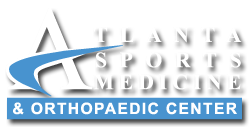Plantar Fasciitis
Plantar fasciitis, which is irritation and swelling of the fibrous tissue on the bottom of the foot, is one of the most common orthopedic complaints relating to the foot. The plantar fascia originates at the calcaneus (heel bone) and fans out toward the toes helping to maintain the arch of the foot. When this inflexible tissue is pulled away from the calcaneus, inflammation and thus pain occurs. The body reacts to this by filling in the space with new bone. A “heel spur” is thus caused. (This spur is a result, not the cause of the problem). A vicious cycle is begun as the condition is now aggravated with each step.
 The symptoms usually begin with a dull intermittent pain on the bottom of the foot close to the heel progressing to sharper, more persistent pain. Symptoms are usually worst with the first few steps in the morning or at the beginning of rigorous activity (sports) and may improve throughout the day. The pain tends to be aggravated by prolonged standing and walking.
The symptoms usually begin with a dull intermittent pain on the bottom of the foot close to the heel progressing to sharper, more persistent pain. Symptoms are usually worst with the first few steps in the morning or at the beginning of rigorous activity (sports) and may improve throughout the day. The pain tends to be aggravated by prolonged standing and walking.
Risk Factors:
– Excessively high or flat arches
– Inappropriate or poor fitting footwear
– Running on toes, hill running
– Soft terrain (i.e. running in the sand)
– Increasing age
– Obesity or sudden weight gain
– Tight Achilles tendon
Treatment:
– Arch supports/shoe inserts – from custom molds from your foot
– Night splints
– Rest – Use pain as your guide. Swimming and/or cycling can be substituted for high impact/weight bearing sports to maintain cardiovascular fitness if the foot is too painful. Weight training can be used to maintain lower extremity strength.
– Ice – Ice the heel for 10-15 minutes several times a day as well as following activity to reduce the inflammation
– Medication – your physician may prescribe anti-inflammatory pills
– Physical Therapy – Initially the objective is to decrease the inflammation, with the focus later progressing to stretching and eccentrically strengthen the small muscles of the foot and calf to support the weakened plantar fascia. Manual Therapy specifically aimed at improving calcaneal and mid-foot joint mobility improves foot shock absorption, thus reducing plantar fascial strain. Dry needling of the plantar fascia can be particularly beneficial. Atlanta Sports Physical Therapy offers this technique.
– Injections– If the above treatment options fail to resolve the problem, a cotricosteroid or Platelet Rich Plasma injection maybe beneficial.
– Surgery is occasionally necessary to release the tension on the plantar fascia, as well as possible excision of the spur.
- Risks of surgery include skin breakdown, infection, slow healing, nerve or blood vessel damage, blood clots, and other complications. Discuss these with your doctor prior to your surgery and make sure you fully understand them.
Exercises and Stretches:
– Towel curls – With a towel placed on the floor, curl the towel toward you using only the toes of your injured foot. Resistance can be increased by placing weight on the end of the towel. Repeat 20 times.
– Shin curls – Try to grab the shin of your opposite leg with the toes of your injured foot while running your injured foot slowly up and down your opposite leg. Repeat 30 times.
– Toe curls – Stand with both feet together. Turn your knees outward while attempting to grab the floor with the toes using the muscles of your injured foot. Hold contraction for 10 seconds and then relax. Repeat 20 times.
– Calf stretches
- A) Lean forward in a lunge position with your injured foot in the back with the knee fully straight. Lean forward until a stretch is felt in your calf muscle. Hold stretch for 15 seconds.
- B) Then bend your knee until a stretch is felt in your Achilles tendon. Hold a further 15 seconds. Repeat 3 times. You should feel a stretch in your muscle and tendon, but no pain.
